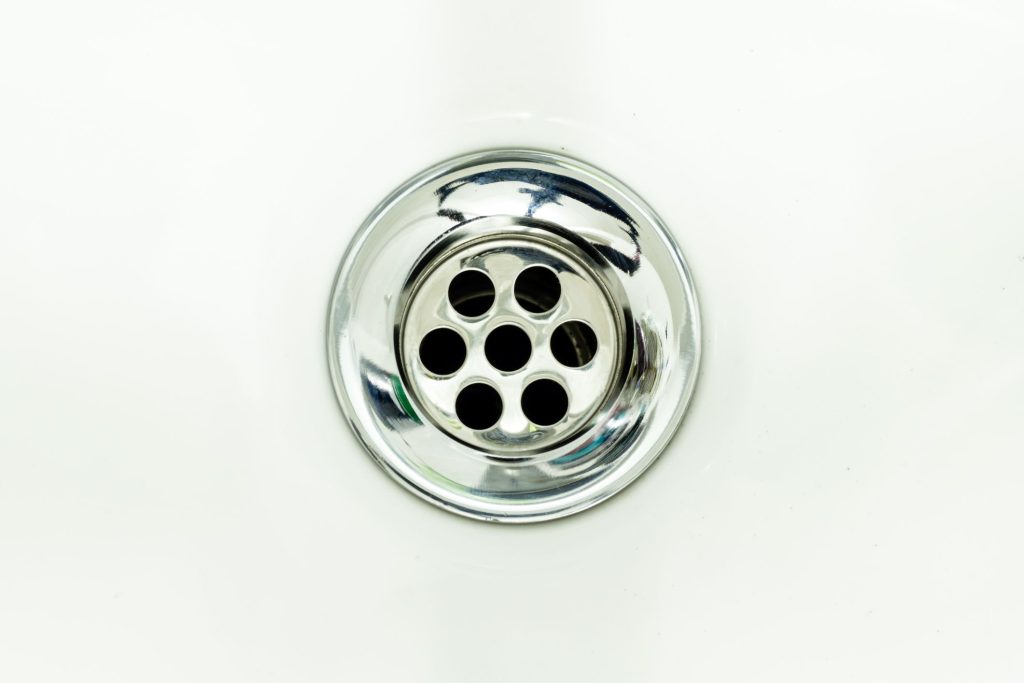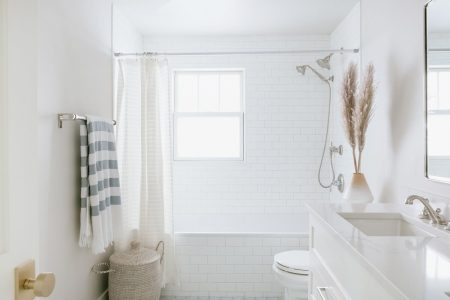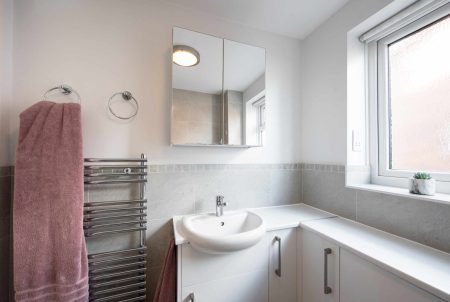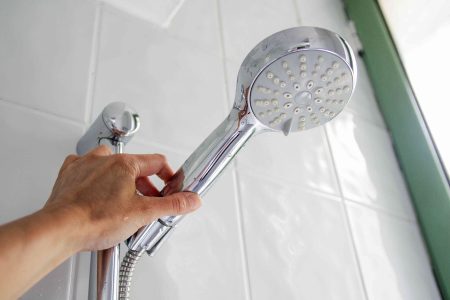A slow-draining bathtub is often caused by clogs in the upper tub drainage section. Most clogs are the result of soap and hair in the drain. This can be fixed in under 30 minutes and for less than $20 with simple tools like a plunger, hair removal tool, or baking soda and vinegar. Stubborn slow-draining bathtubs can be cleared in a half-hour with a power drain snake.
What You’ll Need
Equipment / Tools
Plunger Method
- Cup-style plunger
- Flat-head screwdriver
Clear Stopper/Drain Method
- Flat-head screwdriver
- Pliers
- Needle-nose pliers
Hair Removal Tool Method
- Barbed plastic hair removal tool
Baking Soda/Soap/Vinegar Method
- Tea kettle
- Large measuring cup
Drain Snake Method
- Electric drain snake
- Flat-head screwdriver
Materials
Plunger Method
- Duct tape
Baking Soda/Soap/Vinegar Method
- Baking soda
- Dish soap
- White distilled vinegar
Drain Snake Method
- Scrap cardboard or sheet plastic
- Painter’s tape
Instructions
How to Fix a Slow Draining Bathtub With a Plunger
The most common and effective way to fix a slow-draining bathtub is to plunge it with a cup-style drain plunger. A cup-style plunger has a head that resembles a bell and is also used to fix slow-draining sinks. Do not use a toilet plunger or an accordion-style plunger.
-
Remove the Overflow Drain Cover
Unscrew the plate covering the tub overflow drain. Use a flat-head screwdriver to turn the screw counter-clockwise. Before doing so, stop the tub drain to prevent the screw from accidentally falling into the drain.
-
Cover the Overflow Drain
Lay two or three overlapping strips of duct tape or packing tape across the overflow drain. You may need to first use a towel to dry or clean the overflow flow area to help the strips create an airtight seal.
-
Remove the Drain Stopper
Remove the tub drain stopper completely and set it aside.
-
Add Water to the Bathtub
Fill the bathtub with about two inches of hot water from the bathtub faucet.
-
Position the Plunger
Hold the plunger vertically and place the cup centered over the drain. The lip of the plunger must fully contact the bottom of the tub.
-
Plunge the Tub Drain
Push the plunger down quickly and then pull it up. Keep the cup sealed to the bottom of the tub. Repeat this cycle four or five times.
-
Remove the Plunger
Remove the plunger and watch for drainage. The water in the tub should drain out. If plunging has loosened hair or other clogs, remove them by hand before they go back down the drain.
Clear the Stopper and Drain
Pop-up and other attached bathtub drain stoppers are prone to clogging due to the narrow drainage space. Detaching the stopper and clearing clogs are often all that’s needed to help the bathtub drain flow again.
- Determine the type of stopper as there are many different kinds of drain stoppers.
- Remove the drain stopper.
- By hand or with needle-nose pliers, pull out hair that might be clogging the drain crossbars.
- Clean the bottom of the drain stopper with a cloth and replace the stopper on the drain.
Plastic Hair Removal Tool Method
Hair clogs in the upper section of the bathtub drain can be snagged and removed with a barbed plastic hair drain hair removal tool. This is an inexpensive ($2 to $4) device that can be disposed of after use.
- Remove the drain stopper.
- Hold the hair removal tool by the handle, so that the barbs are facing up.
- Push the hair removal tool straight (without twisting) into the tub drain until the handle meets the drain.
- Slowly pull the hair removal tool straight up, without twisting.
- If no hair is caught on the tool, try again or move to another method.
Baking Soda, Soap, and Vinegar Method
You can unclog a drain with baking soda and vinegar, plus dish soap and two to three cups of hot water. The foaming action may dislodge clogs in the drain.
- Heat four cups of water to a boil with a kettle.
- Squirt a generous amount of dish soap into the tub drain.
- Pour two cups of the boiling water slowly into the drain. The soap and water will begin to loosen the clog.
- Pour one cup of baking soda into the drain.
- Pour one cup of distilled white vinegar into the drain.
- Wait until the fizzing in the drain stops. During this time, reheat the remaining two cups of water to a boil.
- Flush the tub drain with the boiling water.
Drain Snake (Auger) Method
If other methods like a drain plunger do not fix the slow-draining tub, a drain snake can unclog most bathtub drains. A drain snake is either a manual or electric device with up to 25 feet of cable. At the end is a spiral auger that snags clogs. The best drain snake for slow-draining bathtubs is an electric power snake with a 1/4-inch-thick cable.
- Protect the bottom of the tub with cardboard or sheet plastic. Tape down the cardboard or plastic with painter’s tape and continue the material up the vertical section to the overflow drain.
- Remove the overflow drain plate by unscrewing it with a flat-head screwdriver. Drains with a lever on the overflow plate need to have their linkage removed, too, after the plate has been removed.
- While kneeling in the bathtub, insert the auger end of the snake into the overflow opening. Do not turn on the snake yet. Feed as much of the snake into the overflow as you can by hand.
- Turn on the snake to a slow speed. Slowly feed the cable into the overflow drain.
- When the snake has gone as far as it can or it has bound up, turn the machine on reverse and extract the cable.
- Clear off hair and other debris by hand from the end of the snake cable.
- Repeat snaking the tub drain until the auger comes up clean.
When to Call a Professional
Call a plumber to fix a slow-draining bathtub when DIY methods, including using a drain snake, are not working. Professional-grade drain snakes used by plumbers can snake up to 100 feet of drain line, even up to the main sewer line. Fixing a slow-draining bathtub that has become completely clogged and contains standing water is more difficult to fix, so you may want to call a plumber.
-
What causes a slow-draining bathtub?
A slow-draining bathtub is usually caused by partial clogs in the drain pipes. The clogs are usually formed from hair and soap.
-
What can dissolve hair in a drain?
Hair in a drain can be dissolved with chemical drain cleaners that contain sodium hydroxide, a caustic but effective substance, though this is not recommended. Safer green drain openers dissolve hair with microbes.
Read the full article here














